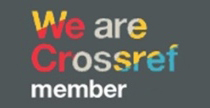DAKWAH MELALUI FILM ANALISIS SEMIOTIKA PESAN DAKWAH DALAM FILM "SANG KIAI" KARYA RAKO PRIJANTO
DOI:
https://doi.org/10.51804/deskovi.v3i2.805Keywords:
pesan dakwah, film, semiotikaAbstract
Tujuan dari penelitian ini secara umum untuk mengetahui bagaimana dakwah melalui film di dalam film “Sang Kiai” karya Rako Prijanto melalui semiotika Roland Barthes. Berdasarkan pada analisis yang dilakukan, maka peneliti menyimpulkan bahwa film ini syarat dengan pesan dakwahnya, di mana proses dakwah yang terjadi di dalam film ini ialah tentang suri teladan seorang kiai Hasyim Asyari yang begitu dikagumi oleh para santri pondok pesantren Tebu Ireng, sahabat dan keluarganya.; (1) terdapat tiga pesan dakwah dalam film “Sang Kiai” karya Rako Prijanto yakni; pesan akidah, pesan akhlak dan pesan syariat. (2) dakwah dalam film “Sang Kiai” dikemas dengan menampilkan karakter-karakter dialog yang sangat menggugah dan penuh pesan bermakna hubungan antar sesama manusia dan hubungan kepada Allah SWT, dan tidak terlepas dari nilai-nilai nasionalisme. (3) simbol-simbol yang mengandung kaidah-kaidah yang Islami baik itu dari cara berpakaian, tutur kata, sikap yang sopan santun, hormat kepada orang tua dan guru, menjaga ibadah serta berjihad di jalan Allah SWT.
The purpose of this research in general is to study how da'wah through the film in the film "The Kiai" by Rako Prijanto through the semiotics of Roland Barthes. Based on the analysis conducted, the researcher concludes that this film has the message of da'wah, where the da'wah process that occurs in this film is about the example of a Kiai Hasyim Asyari who is highly admired by Tebu Ireng boarding school students, friends, and his family. ; (1) There are three da'wah messages in the film "Sang Kiai" by Rako Prijanto, namely : a) aqeedah message, the moral messages, & sharia messages. (2) Da'wah in the film "The Kiai" is packaged by displaying characters of dialogue that are very evocative and full of meaningful messages of relationships between human beings and relationships to Allah SWT, and are inseparable from the values of nationalism. (3) Symbols that display Islamic rules both from the way of dress, speech, polite attitude, respect to parents and teachers, maintain worship, and strive in the way of Allah SWT.
Downloads
References
Abede, Pareno Sam. 2005. Manajemen Berita antara Idealisme dan Realita. Surabaya, Papyrus.
A Nasir, Sahilun. 1991. Tinjauan Akhlak. Surabaya: Al Ikhlas.
Amin, Samsul Munir. 2009. Ilmu Dakwah. Jakarta. Amzah.
Amir, Mafri. 1999. Etika Komunikasi Massa Dalam Pandangan Islam. Jakarta. PT. Logos Wacana Ilmu.
Aziz, Mohammad Ali. 2004. Ilmu Dakwah. Jakarta. Kencana.
Departemen Agama RI. 2010. Al-Qur’an dan Tafsirnya. Jilid 10. Jakarta: Lentera Abadi.
Ibrahim. 2015. Dakwah Dalam Kemasan Media : Seri Kajian Komunikasi Penyiaran islam. Pontianak. IAIN Pontianak PRESS.
Kurniawan. 2001. Semiologi Roland Barthes. Magelang. Yayasan Indonesiatera.
Vera, Nawiroh. 2014. Semiotika dalam Riset Komunikasi. Bogor. Ghalia Indonesia.
Sobur Ale. 2003. Semiotika Komunikasi. Bandung. Remaja Rosdakarya.
Sumarno, Marselli. 1996. Dasar-dasar Apresiasi Film. Jakarta. Grasindo.
Umar, Toha Yahya. 1967. Ilmu Dakwah, Jakarta. Wijaya.
Downloads
Published
How to Cite
Issue
Section
License
With the receipt of the article by DADJ Editorial Board and the decision to be published, the copyright regarding the article will be transferred to DADJ. The copyright transfer form can be downloaded here.
DADJ has the right to multiply and distribute the article and every author is not allowed to publish the same article that was published in this journal.

DESKOVI: Art and Design Journal is licensed under a Creative Commons Attribution 4.0 International License.
Under the following terms:
Attribution — You must give appropriate credit, provide a link to the license, and indicate if changes were made. You may do so in any reasonable manner, but not in any way that suggests the licensor endorses you or your use.






